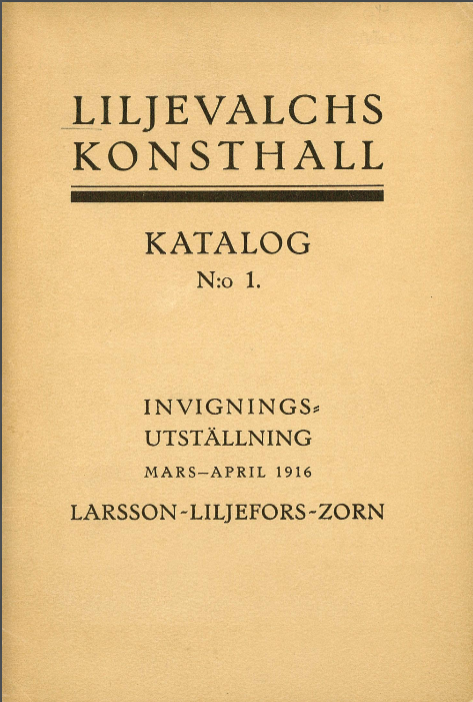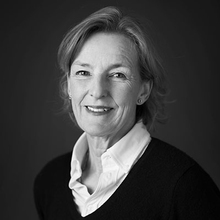Anders Zorn
"Modersglädje" (Maternal Delight)
Signed L. Zorn suecos and dated Cadiz febr. -82. Also signed in pencil. Watercolour, heightening white and india ink on paper (oval) 65 x 49 cm. Original frame by W.A. Smith, Carver and Gilder, London.
Provenance
Wholesale dealer Edvard Casparsson.
Managing director Axel Jacobsen.
Mrs. Bessie Jacobsen.
The Collection of Bo and Margareta Lindh, Stockholm.
Bukowski Auktioner AB, Stockholm, auction 580, "Vårens Klassiska", June 2 - 5, 2014, cat. no 584.
Private Collection.
Exhibitions
Konstföreningen, Stockholm, 1882.
Kunstpalast, Düsseldorf, cat. no 1417.
Baltiska utställningen, Malmö, 15 May - 4 October 1914, cat. no 345.
Liljevalchs Konsthall, Stockholm, "Invigningsutställning. Larsson-Liljefors-Zorn", March - April 1916, cat. no 3.
Liljevalchs Konsthall, Stockholm, "Anders Zorn. Minnesutställning", 1 March - 6 April 1924, cat. no 242.
Kungl. Akademien för de fria konsterna, Stockholm, "Mitt bästa konstverk. Utställning anordnad av Rädda Barnen", 1941, cat. no 299.
Nationalmuseum, Stockholm, "Opponenterna av 1885. Utställning till sextioårsminnet av det första moderna genombrottet i svensk konst", 16 March - 16 May 1945, cat. no 536.
Birmingham Museum of Art, Alabama, USA, "Zorn. Paintings, Graphics and Sculpture", 27 March - 6 June 1986, cat. no 28.
The Dixon Gallery and Gardens, Memphis, Tennessee, USA, "Zorn. Paintings, Graphics and Sculpture", 15 June - 10 August 1986, cat. no 28.
Museum of Fine Arts, St. Petersburg, Florida, USA, "Zorn. Paintings, Graphics and Sculpture", 14 September - 26 October 1986, cat. no 28.
Zornsamlingarna, Mora, 1989.
Prins Eugens Waldemarsudde, Stockholm, "Anders Zorn -Till ögats fröjd och nationens förgyllning", 15 September - 11 December 1994, cat. no 2.
Göteborgs Konstmuseum, "Anders Zorn -Till ögats fröjd och nationens förgyllning", 26 December 1994 - 26 March 1995, cat. no 2.
Prins Eugens Waldemarsudde, Stockholm, "Ernst Josephson. Målare och diktare", 12 October 2001 - 13 January 2002, cat. no 175.
Liljevalchs konsthall, "Liljevalchs 100 år", October 15, 2021 - January 10, 2022.
Literature
Ernst Malmberg, "Larsson-Liljefors-Zorn. En återblick", 1919, mentioned p. 86 and illustrated half page.
Karl Asplund, "Anders Zorn. His life and work", 1921, mentioned p. 15.
Tor Hedberg, "Anders Zorn. Ungdomstiden 1860-1893", SAK 1923, mentioned p. 45 and illustrated full page, p. 44.
Nils Lago-Lengquist, 'En konstälskares hem i Djursholm. Direktör och fru Axel Jacobsen', article in "Svenska hem i ord och bilder", 1930, mentioned p. 50 and illustrated p.48.
Bo G. Wennberg, "Mitt bästa konstverk. En konsthistorisk översikt från utställningen 1941 å Kungl. Akademien för de fria konsterna", 1942, mentioned pp. 129-130 and illustrated p.125.
"Konst i svenska hem", vol. II, N:o 5, catalogued p. 253 under collection 379: "Fru Bessie Jacobsen, Narvavägen 35, Stockholm".
Gerda Boëthius, "ZORN. Tecknaren. Målaren. Etsaren. Skulptören", 1949, mentioned pp. 98, 103 and 506, illustrated full page, Fig. 23 and catalogued p. 538.
Gerda Böethius, "Anders Zorn. An international Swedish artist. His life and work", 1954, mentioned p. 17 and illustrated full page, Pl. 26.
Hans Henrik Brummer, "ZORNMCMLXXXIX", 1989, mentioned pp. 43-44 and illustrated full page in colour, p. 44.
Hans Henrik Brummer, "Till ögats fröjd och nationens förgyllning -Anders Zorn", 1994, mentioned pp. 59-60 and illustrated full page in colour, p. 58.
Johan Cederlund, "Zorn i Spanien", 2009, mentioned p. 43 and illustrated full page in colour, p. 47.
More information
After initial stays in Madrid and Seville during November 1881, Zorn set off for Cádiz, tempted by the sea and the city’s women who were reputed to be the most beautiful in all of Spain. Zorn expressed it accordingly in his autobiographical notes: "Yet there was something within me that pulled me towards the ocean – there is always something that pulls me to the ocean. […] Oh this marvellous island in the Atlantic, connected by a strip of land to the mainland! This wonderful sea air filling one’s lungs, these friendly and hospitable people and these delightful Caditanas! The rule was that the most beautiful girls came from Cadiz.” The painting in the auction, "Modersglädje" is, along with the watercolour "Kusinerna", executed in Cádiz in the same year, one of the absolute central works from Zorn’s first important trip to Spain in 1881-82.
Johan Cederlund has given an account of how "Modersglädje" came about: "Filled with confidence Zorn set about to create what would become two of his central works from his first trip to Spain, "Kusinerna" and "Modersglädje". […] "Kusinerna" became Zorn’s first international success. It was shown at the Salon in 1882 and the newspaper La Presse wrote that Zorn was ‘un aquarelliste de talent’. […] "Kusinerna" is dated to January 1882. Immediately after Zorn tackled his next central work, "Modersglädje", in which a young woman is lovingly playing with her child. The composition, and in particular the child, is reminiscent of Murillo’s famous painting Madonna and Child (1665-66), which is in Museo de Bellas Artes in Seville and which Zorn had acquired a copy of. As with "Kusinerna", "Modersglädje" demonstrates a rich variation between sections of flowing colour and detailed precision work, as seen in the woman’s coral necklace and silver earring”.
"Modersglädje" was shown in the late autumn of 1882 at Konstföreningen in Stockholm, where it was given an overall favourable reception. In the newspaper Aftonbladet one could read on the 28th of December 1882 how: "Leonard Zorn has for a long while commandeered the visitors’ attention with his "Modersstolthet", a mother with her child – with a particular characteristic expression in her dark, shining eyes, an excellent modelling of the unclothed sections, a lush and soft, very soft, brush and finally such a composition of colours that only this continually forward-moving artist is able to offer us” .
The watercolour was especially appreciated by the artist’s friend Edvard Casparsson who bought the painting for fifty pounds. On the 20th of November 1882 Casparsson wrote to his mother about his successful purchase: "I do not know if you shall like it, but it is undoubtedly Zorn’s most important painting on show in Sweden, or ever" as quoted by Hans Erik Brummer in "Till ögats fröjd och nationens förgyllning – Anders Zorn", 1994.
Hans Henrik Brummer, who referred to the watercolour as "Modersstolthet", has commented on the subject thus: "Even if the image in its overtness may seem banal there is however no reason to underestimate its emotional content". He goes on to write: "Under certain conditions it may even induce feelings of the purest kind. His fiancee, Emma Lamm, wrote in the summer of 1883 to her betrothed that she had had a powerful experience in front of Modersstolthet; ‘When I saw your "Modersstolthet" I felt it to be the greatest I have seen to come from your hand. She was beautiful this painting, in colour and form. I do not know. But one felt in front of her a breeze of the spirit alive, which constitutes the greatness in all creation. It was as if when you painted it you forgot about what was around you and you were captured by a sacred feeling of motherly tenderness’”.
Emma was possibly on to something in her account of the watercolour. Gerda Boëthius connected with this description of the subject when she referred to it as: “a central work that he has put his entire soul into. It is powerfully inspired and the composition is brilliant” (ZORN. Tecknaren, Målaren, Etsaren, Skulptören, 1949).
By the end of February, as "Modersglädje" was finished, Zorn left Cádiz, having spent one of his happiest and most productive periods as an artist there. "I painted”" he would later recall, "with a passion I had never felt before. I was spiritually and physically at my best."
The motif was also executed as an etching the same year (Asplund 4-6, Hjert & Hjert 4-6).
Artist
Anders Zorn, born in Mora in 1860, showed artistic talent from a young age. In 1875, he traveled to Stockholm and became a student at the then Slöjdskolan (now Tekniska högskolan) in Stockholm, and shortly after, he joined the Royal Academy of Fine Arts. Initially, Zorn had aspirations of becoming a sculptor, but soon watercolor painting took over, becoming his primary medium until 1887. At the student exhibition in 1880, Zorn had his breakthrough with the watercolor painting "I sorg." The following year, he gained international acclaim as a portrait painter. His watercolor painting reached its pinnacle during this period, and his most famous work from this time is "Vårt dagliga bröd” from 1886. Shortly thereafter, Zorn transitioned to oil painting, which was met with immediate success. Zorn's reputation mainly rested on his portrait art, and he portrayed many notable figures, including presidents. For instance, he created an etching of Theodore Roosevelt. His etchings significantly contributed to his success. In the late 1880s, Zorn began working in the genre that would increasingly become his trademark: nude figures in outdoor settings. He had long been fascinated by the movement of water and the reflections of light on its surface. Now, he added the complexity of placing a model near or in the water, aiming to depict a synthesis between nature and humanity. In 1896, Zorn and his wife moved back to Sweden and settled in Zorngården in Mora. This move sparked a renewed interest in his homeland, which would be reflected in his future paintings. Among the artist's scenes from the Mora region, portraying its local customs and ancient traditions, "Midsommardansen" holds the highest value according to Zorn himself. Today, the painting can be found at the National Museum.
Read more












































































